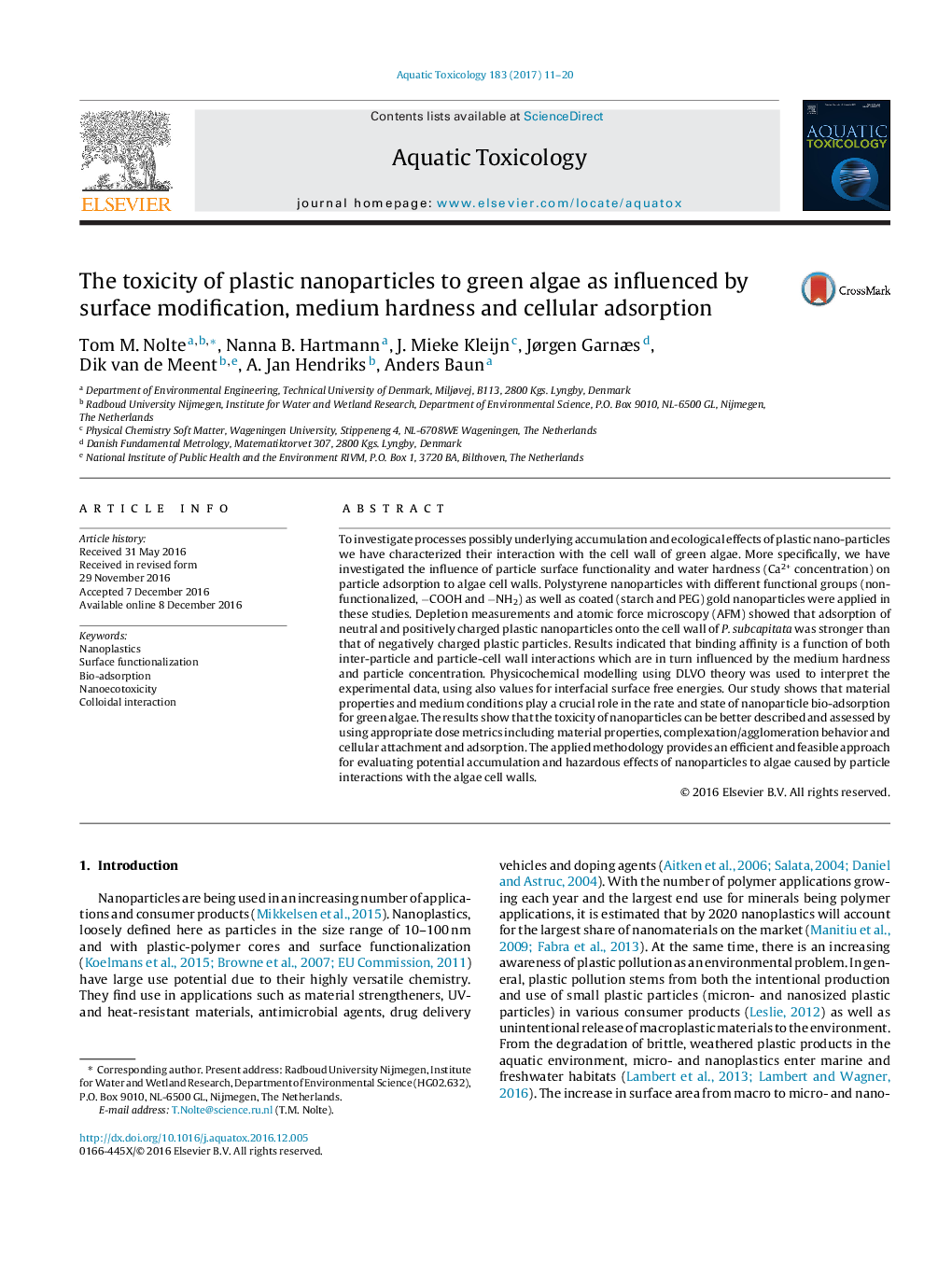| کد مقاله | کد نشریه | سال انتشار | مقاله انگلیسی | نسخه تمام متن |
|---|---|---|---|---|
| 5764196 | 1625922 | 2017 | 10 صفحه PDF | دانلود رایگان |
- P. subcapitata cultures were exposed to plastic nanoparticles in adsorption assays.
- UV/Vis and AFM showed ionic strength and surface chemistry influence adsorption of anionic and neutral nanoplastics.
- Growth inhibition of algae is antagonistically influenced by carboxylate-modified polystyrene and calcium.
- Physico-chemical characterization and proper dose metrics can be used to predict ecotoxicity.
To investigate processes possibly underlying accumulation and ecological effects of plastic nano-particles we have characterized their interaction with the cell wall of green algae. More specifically, we have investigated the influence of particle surface functionality and water hardness (Ca2+ concentration) on particle adsorption to algae cell walls. Polystyrene nanoparticles with different functional groups (non-functionalized, âCOOH and âNH2) as well as coated (starch and PEG) gold nanoparticles were applied in these studies. Depletion measurements and atomic force microscopy (AFM) showed that adsorption of neutral and positively charged plastic nanoparticles onto the cell wall of P. subcapitata was stronger than that of negatively charged plastic particles. Results indicated that binding affinity is a function of both inter-particle and particle-cell wall interactions which are in turn influenced by the medium hardness and particle concentration. Physicochemical modelling using DLVO theory was used to interpret the experimental data, using also values for interfacial surface free energies. Our study shows that material properties and medium conditions play a crucial role in the rate and state of nanoparticle bio-adsorption for green algae. The results show that the toxicity of nanoparticles can be better described and assessed by using appropriate dose metrics including material properties, complexation/agglomeration behavior and cellular attachment and adsorption. The applied methodology provides an efficient and feasible approach for evaluating potential accumulation and hazardous effects of nanoparticles to algae caused by particle interactions with the algae cell walls.
63
Journal: Aquatic Toxicology - Volume 183, February 2017, Pages 11-20
